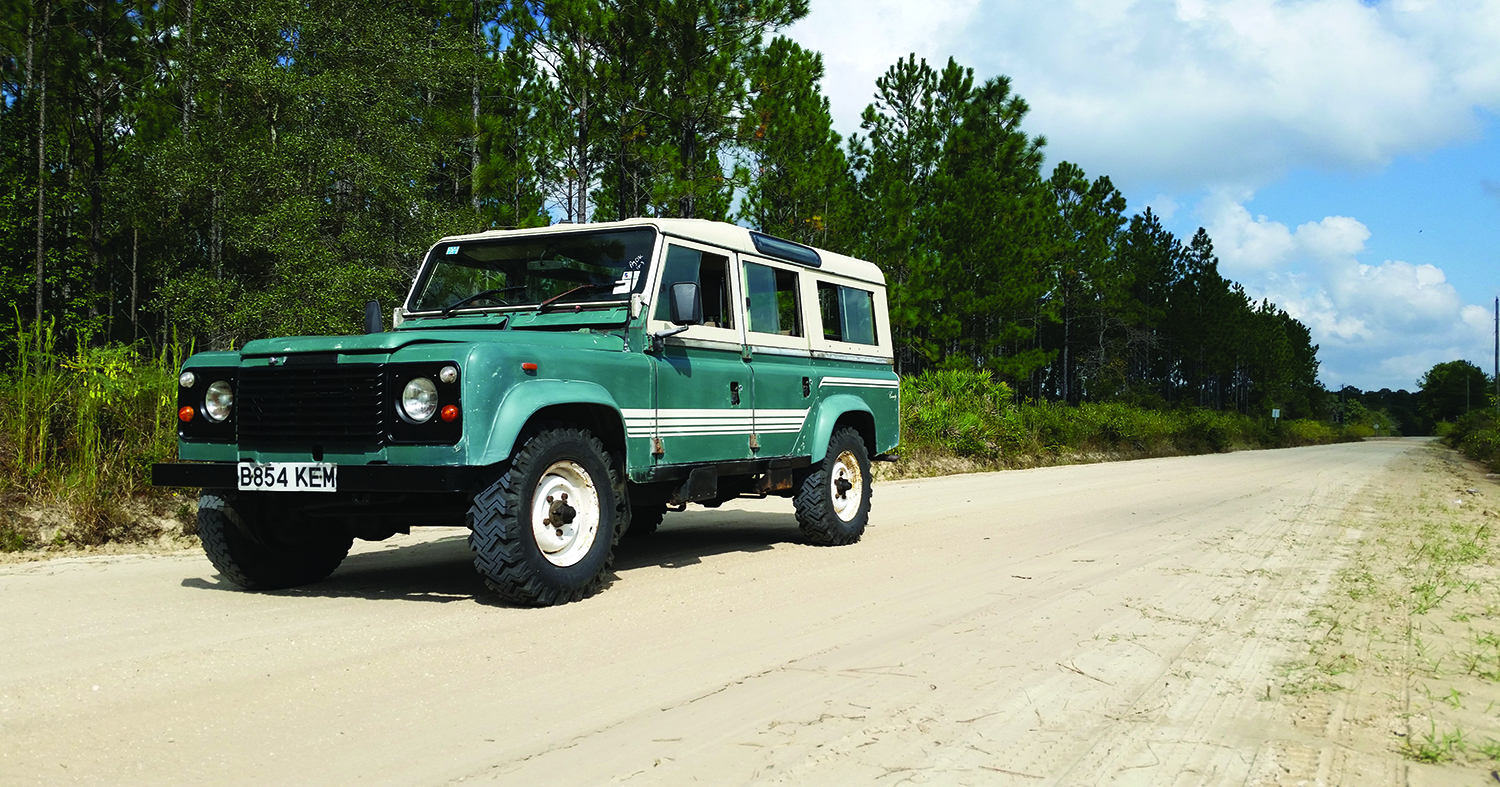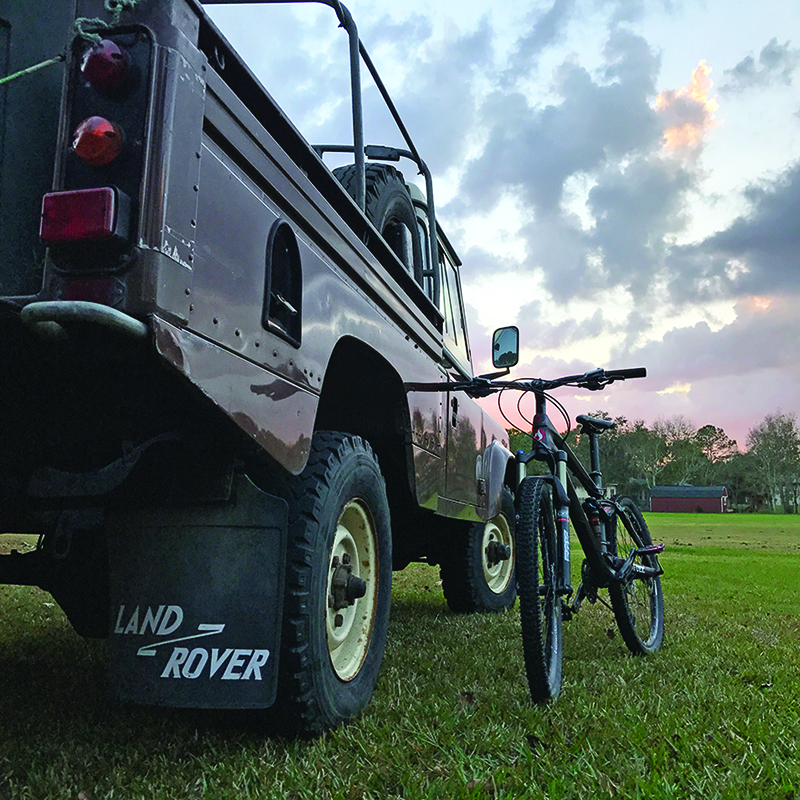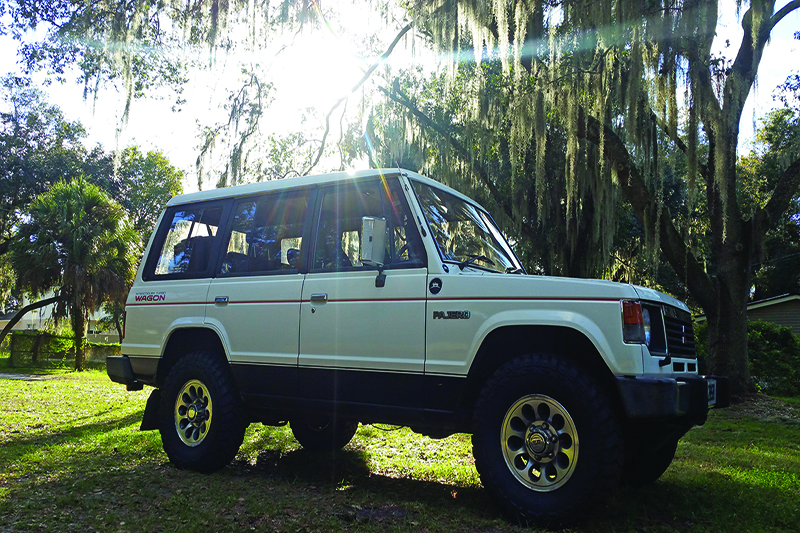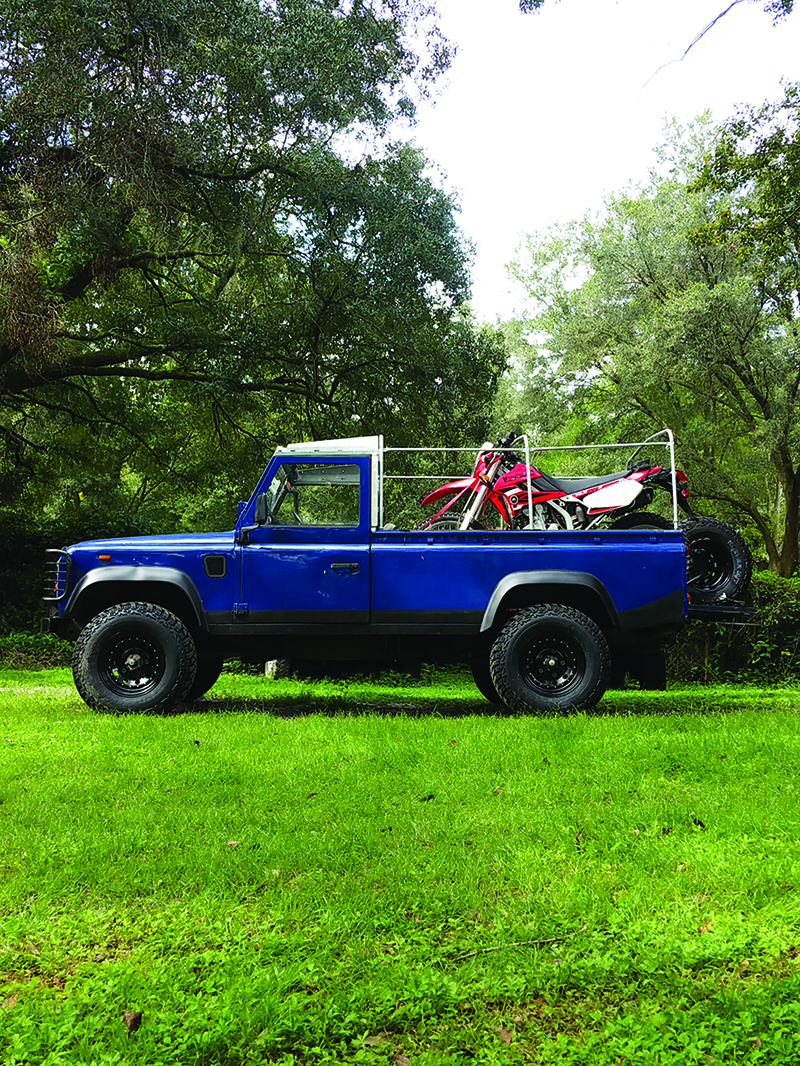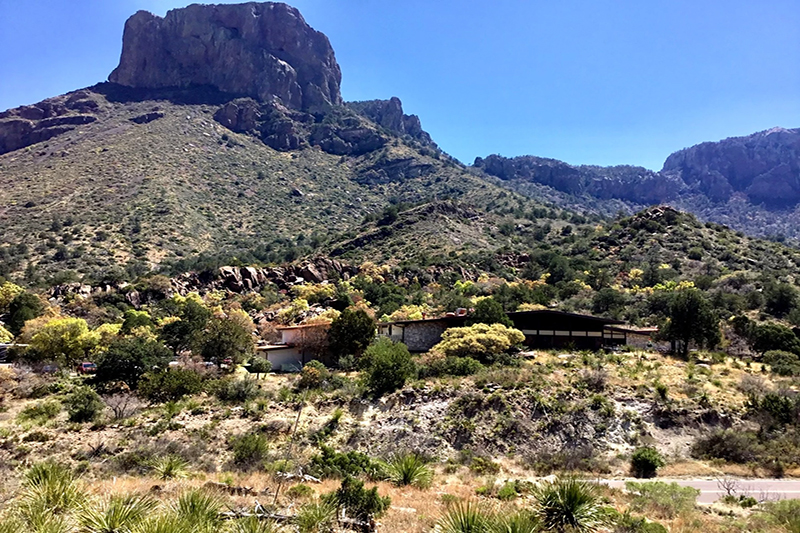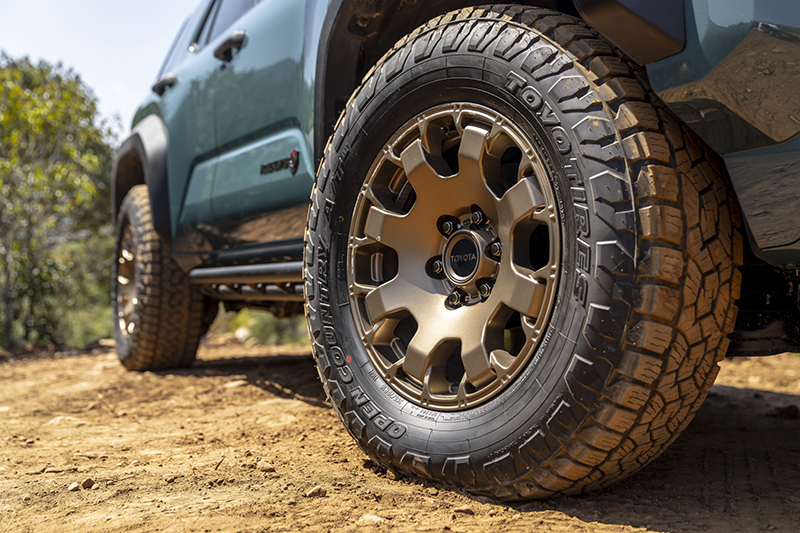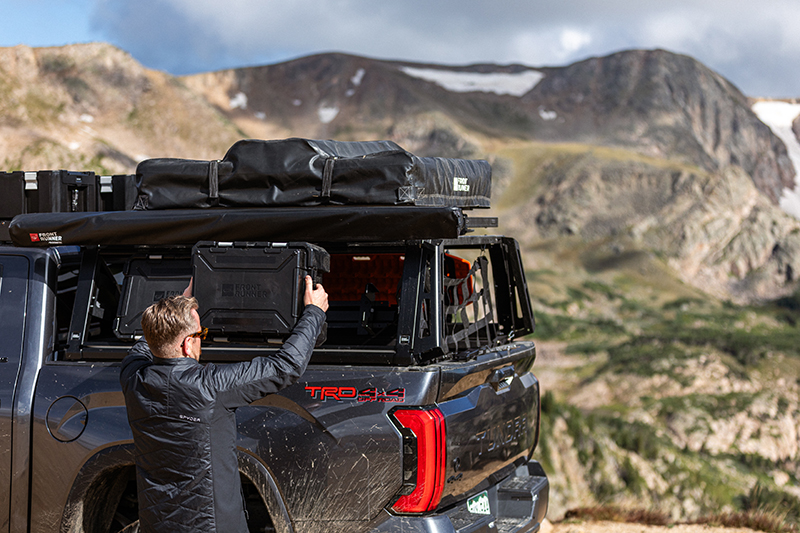Buying vintage iron
What a time to be alive. It seems these days that old rigs are everywhere. Vehicles once only found rusting away on trails, beaches, or hunting leases are now running up and down the streets of your local downtown. Parking spots at trendy establishments almost look like a classic car farm sprouting haggard relics alongside polished modern steeds. Oddly enough, this new trend is a polarizing topic within the outdoor community. Who would have thought that people would actually be opposed to seeing an influx of classic rides? From what I have gathered the beef comes from a perceived dilution of the market by having more running examples available. Theoretically, this could drive prices down, but I’m actually pretty stoked on that idea. It would make it a lot cheaper to snag some of the trucks I’ve always wanted and who doesn’t like saving money? Besides, older trucks are already much cheaper than new 4x4s. The average cost of a good running example can be less than $10,000, whereas a newer truck could cost well above $40,000…for what, electronic wizardry? The allure of costing less money is usually what first draws someone to drive an older truck, but in the end it’s the vehicle’s inherent sense of spontaneous adventure that keeps us driving them.
Has anyone seen the 10mm socket?
One thing is for sure, if you’re in the market for a retro ride make sure you are handy with a spanner and, if you’re not, start practicing. That statement is not meant as a deterrent, just an expectation reset button before you dive blindly into the world of ownership. As someone who makes money from working on vehicles this is the part where I’m supposed to convince you that you need to hire a mechanic or spend thousands on refurbishing, but it’s simply not true. Most of the issues you’ll run into are pretty straightforward and you can easily enjoy a rad 4×4 on a budget. All a machine typically wants to do is perform its intended function. If you keep it fed (fuel), watered (running cool), and exercised (the more it sits the less it works) it will rarely let you down.
Working for the weekend
Like many of you, I have a 40-hour-per-week “real job.” I spend my days traveling all over Florida performing site visits for an engineering firm where we jokingly refer to ourselves as professional “take-a-look-at-ers,” which is pretty accurate. I work with a great group of friends and we have a lot of fun, but I have found myself wanting more. This thirst for adventure, paired with my love for older vehicles, eventually pushed me to start Southern Overland Company, spending nights and weekends tearing down, repairing, and customizing all kinds of 4x4s, including Defenders, Pajeros, Land Cruisers, and Jeeps. After importing and building a few Defenders we saw a major surge in popularity. Our laidback, counter-culture approach really resonates with people.
Welcome to Jurassic Park!
I’ve been bouncing around in, and incessantly working on, old rigs as daily drivers for most of the past 17 years, and both hands have enough scars to prove it. I’ve logged thousands of miles in a 1988 Jeep Wrangler Sahara, 1988 Nissan 300zx Turbo (so Overland, right?), 1990 Range Rover Classic, 1995 Discovery 5spd, several Land Rover 90s & 110s, 1995 Jeep XJ, and my current daily driver, a 1995 Jeep Wrangler Sahara with 186,000 miles. After watching Jurassic Park for what seemed like the 1,878th time it hit me, I needed a YJ Sahara again. I spent many months lurking the depths of Craigslist until I spotted what would become my new Jeep resting under a significant layer of dirt in a Satellite Beach garage. All the right keywords littered the ad to draw me in: “Bring a trailer,” “mechanic’s special,” and “bad coolant leak.” With a brief exchange of text messages, we arranged a time for me to look at it. At $2,600 the price was too good not to buy it and I decided it was coming home with me even if the engine was made from 2L bottles, paper clips, and papier-mâché.
Cool story, bro
As with any aging example of 1980s American engineering, the Jeep needed some love. The coolant leak was first on the list; well, actually leak isn’t an accurate word. It was more like an overflow gate on a TVA dam during a rainy season. Coolant was cascading down the back of the engine. Imagine my enthusiasm when I realized the best approach was to pull the engine from the Jeep and replace the $1.34 brass plug on the back of the head. This was a good opportunity to replace the water pump, thermostat, and pulleys while they were easily accessible — cheap insurance. Your vehicle’s cooling system is a delicate balance of the thermal properties for several different materials doing their best to coexist. Grab the hoses and give them a squeeze; if they sound like you just balled up aluminum foil then replace them. They should be free of cracks, pits, and significant discoloration. If there are rusty stains around the radiator opening, pop off the cap (while cool) and make sure the water/coolant mixture doesn’t look like carrot juice. Same applies if you notice staining around the water pump; pull a hose off and take a peek. These components are typically very cheap and readily available for the vast majority of vehicles manufactured within the last 50 years. Do yourself a favor and just replace it all from the beginning. Retain the removed components for emergency spares if they have some life left in them.
Brake me off some of that
One of the next systems to cause you grief in a vintage ride is the brake components. It should go without saying that there are serious safety concerns associated with relying on 30+-year old brakes. The calipers often seize under heavy braking, the master cylinders leak, boosters fail, and the plumbing lines simply rust out or deteriorate over time. Calipers can either be rebuilt at home or you can buy rebuilt ones from one of the many companies out there. It’s not uncommon to find calipers from local parts stores for under $100. Master cylinders and boosters can be a little more difficult to come across depending on your make/model. There are lots of good suppliers out there supporting the community for nearly any vehicle except maybe the Geo Metro; in that case, you might be out of luck. Lucky for me, the calipers on the Jeep had been replaced within the last few years and still looked and functioned wonderfully. All the lines were in good condition and the master cylinder was leak-free. This was great news for the wallet, but unfortunately there were many more items on the punch list.
Crumblestiltskin
Like coolant hoses, other soft rubber components will almost certainly be completely obliterated when you find a used 4×4 over 20 years old. This is especially true if you are lurking Craigslist for deals. For window and door trim, seals, body mounts, engine/transmission mounts, fuel/oil lines, and ball joint boots, years of exposure to temperature cycles, corrosive elements, and leaking fluid are often reduced to crumbling chunks and that’s scarier than a troll living under a bridge. This gave the Jeep a driving experience very similar to Mr. Toad’s Wild Ride. If it seems like it’s a lot of stuff to replace, it’s because it is. Fortunately, these are not particularly expensive items. The order of replacement varies with each vehicle, but it’s best to focus on the steering components and fuel/oil lines first for safety reasons then move on to the next worse area. When in doubt, replace it. The Jeep received a full treatment of ball joints, fuel connections, and engine/transmission mounts. The results were well worth the hassle.
Structural Swiss cheese
Although it spent most of its life within a half mile of the ocean the YJ was remarkably free of rust. Now if only imported Land Rovers could be more like that. They are notorious for Swiss cheese frames. This is singlehandedly the biggest killer of old school 4x4s. Let’s face it, these vehicles very rarely led glamorous lives and were often driven in demanding conditions. Once the rust starts, it rarely slows. The best thing you can do is start cutting or coating problem areas in rust inhibitor. A positive side to rust is it gives you the ability to score some sweet deals if you’re willing to put in the work. Complete replacement frames are available for most vehicles and some vehicles are easier than others to swap out.
1.21 gigawatts
Another hurdle of driving an old vehicle is the electrical system. For me the less electrical equipment in a vehicle the better, which comes from years of experience with old British vehicles. Anyone who’s ever spent more than a day in a Land Rover is familiar with electrical annoyances, typically in the form of intermittent issues with lights, window motors, sunroofs, and door locks. Every vehicle has different problem areas, but most common are faulty ground wires. This can cause a whole host of stuff including the aforementioned issues. It’s best to go through the truck and check all ground points. Disconnect, clean, and reattach all frame mount points. Keep your grounds tight and your ECM dry to avoid headaches.
Don’t think about it, be about it
Even though you might spend more on maintenance initially, the cost of ownership can be cheaper than the purchase price of a modern, electrically complex 4X4. Additionally, the ease of service and troubleshooting in the field is one of the best selling points for me on an older ride. So, when you’re shopping for a vintage vehicle it’s important to follow these recommendations: Do your research, ask good questions, and keep your expectations of both time and money realistic. A quick Google search can deliver instant knowledge of what to look for and what to avoid for a particular vehicle. Any maintenance history? Major repairs? Is it haunted? How many pizzas can it hold? These are always good to know. Just remember that old cars take time. Be patient and spend your money wisely. They may smell funny, make weird noises, ride a bit rough at times, and lack many of the modern conveniences you may have in newer cars but it’s totally worth it. With exponentially more smiles per gallon, the positives of owning an older 4×4 greatly outnumber the negatives. Adventure is all about uncertainty. It keeps you on your toes, so give an old vehicle some love and let it show you places you could only dream of.
Importer or Not?
Importing a vehicle doesn’t have to feel like playing darts blindfolded after 12 tequila shots. If it does, run! With the increasing interest stateside in overseas vehicles, the risk of being misled increases. When we first started shopping for vehicles to import we looked at several trucks that photographed well, but when inspected in person they literally fell apart. Here are some helpful tips when shopping from thousands of miles away.
Keep expectations realistic. Money. Time. Vehicle. If your budget is $3.45 then be realistic about what you can legitimately expect a matching vehicle to look like. You get what you pay for. It amazes me when a customer expects to buy a $9,000 Defender in a condition like one worth $40,000. It just doesn’t work that way. Be prepared to spend. These things take time. Governments move like molasses and boats aren’t necessarily fast. Be patient.
One of the hardest parts about importing a vehicle is not getting all heart-eyes over every vehicle you inquire about. It’s very easy to fall hopelessly in love with a vehicle on the other side of the world once you start picturing all the potential adventures. But trust me, there’s always another.
Ideally you have some sort of contact overseas who can act as your eyes on the vehicle. If not, no worries. There are quite a few importers stateside who can help coordinate. During the inspection process make sure they do a thorough check at the typical corrosion areas such as door hinges, floors, firewall, door bottoms, and frame bottom. The locations where issues occur typically are not model-specific and should be a good measure for any vehicle. High-risk vehicles such as Defenders should be properly vetted for any indication of dodgy paperwork or manipulated VIN locations. The last thing you want is your hard-earned dollars going to waste when Customs and Border Protection (CBP) crushes your ride.
Once you’ve decided on buying the vehicle and have made arrangements to get it to the overseas dock you need a reliable broker stateside to handle the mountain of paperwork. This is very important and without it you could be in for heartache down the road. Surprisingly, this is a more difficult task than you’d imagine and takes a little trial and error to get it dialed in. You want someone who acts quickly to coordinate shipping from the port so you don’t stack up a daily storage fee with CBP.
So, the big question is: Can you coordinate all these services on your own without an importer? Sure, but if you’re anything like me you value your time and it’s much more efficient to outsource it to someone with experience and save yourself the headache. Have questions? Reach out. There are always people in this community willing to help.
OutdoorX4 Magazine – Promoting responsible vehicle-based adventure travel and outdoors adventure


